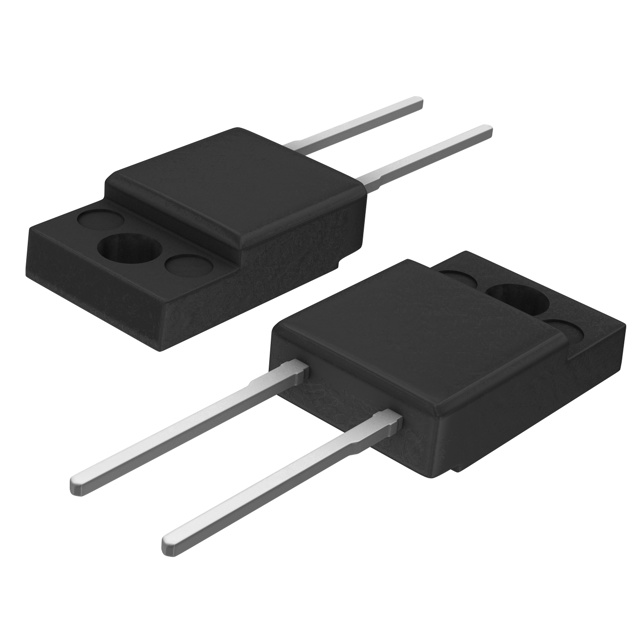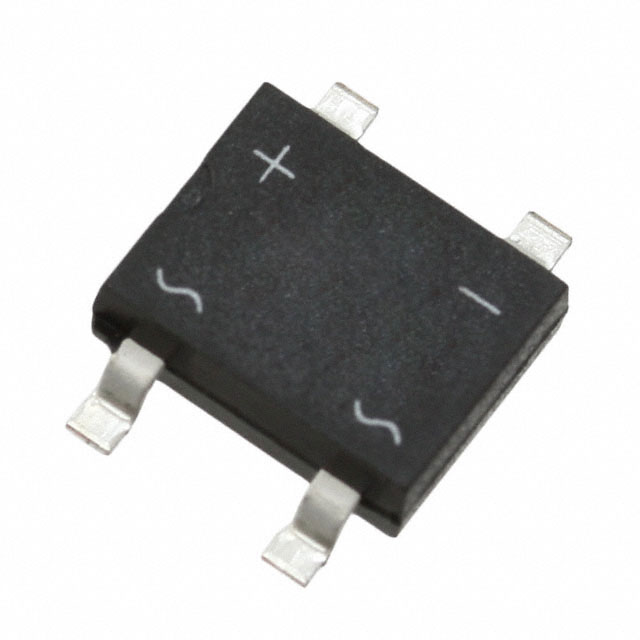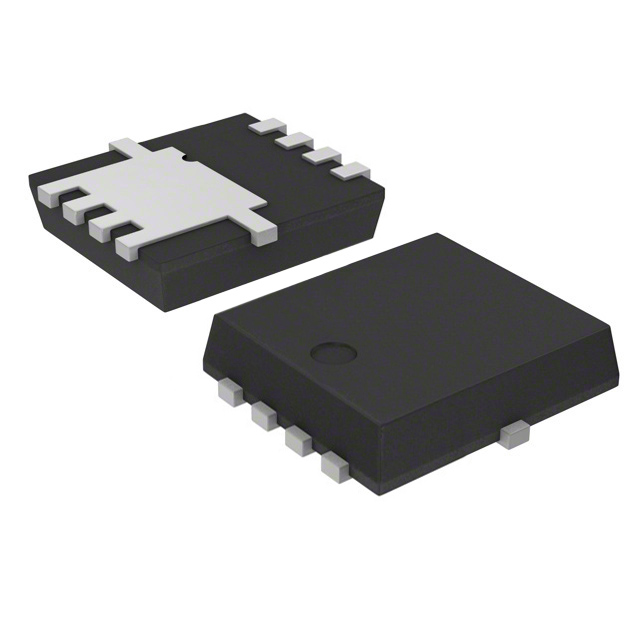
Variable Resistor: Types, Applications, and How It Works
Global electronic component supplier ERSAELECTRONICS: Rich inventory for one-stop shopping. Inquire easily, and receive fast, customized solutions and quotes.
What is a Variable Resistor?
A variable resistor is an electronic component that allows adjustable resistance, making it essential for controlling current, voltage, and signals in electronic circuits. Unlike fixed resistors, variable resistors can continuously change resistance within a specified range. Common types include potentiometers, used for adjusting audio levels and voltage; rheostats, designed for current control; and digital potentiometers, which use electronic signals for discrete resistance adjustments.

These resistors consist of a resistive element and a wiper mechanism that alters the effective resistive path. Key features include adjustability, diverse applications like audio equipment and motor controls, and varying constructions to suit specific needs. Variable resistors are indispensable for fine-tuning electrical parameters in both simple and complex electronic systems.
Variable Resistor Symbol
The symbol for a variable resistor represents its ability to adjust resistance in a circuit. It is typically depicted as a standard resistor symbol with an arrow drawn across it, indicating its adjustable nature. The arrow signifies the movable wiper, which alters the resistance by changing the contact point along the resistive element. This symbol is used in circuit diagrams to denote components like potentiometers and rheostats, highlighting their role in dynamically controlling current, voltage, or other electrical parameters. Its clear representation ensures easy identification and understanding of circuit designs.

Primary Features of Variable Resistor
Variable resistors, including potentiometers and rheostats, are essential components in electronic circuits due to their adjustable resistance capabilities. Here are the primary features that define their functionality and applications:
1. Adjustable Resistance
Mechanism: Variable resistors allow users to change the resistance value manually through a movable wiper or slider that contacts a resistive element. This adjustment can alter the current and voltage in a circuit, making them versatile for various applications.
2. Types
Potentiometer: Typically has three terminals and functions as a voltage divider. It is used for applications like volume control and tuning circuits, allowing fine adjustments in output voltage.
Rheostat: Generally has two terminals and is primarily used to control current flow in a circuit. Rheostats are often constructed as wire-wound resistors for higher-power applications.
3. Taper Types
Linear Taper: The resistance changes linearly with the position of the wiper, providing a direct proportional relationship between mechanical position and resistance.
Logarithmic Taper: Commonly used in audio applications, this taper provides a logarithmic relationship, which is more suitable for human perception of sound levels.
4. Construction
Variable resistors consist of:
- A resistive element (often made from carbon or metal).
- A wiper or sliding contact that moves along the resistive path.
- Terminals for electrical connections (two for rheostats and three for potentiometers).
5. Applications
Used in various electronic devices for:
- Volume control in audio equipment.
- Dimming lights.
- Adjusting signal levels in circuits.
Their ability to provide variable resistance makes them crucial in both consumer electronics and industrial applications.
6. Size and Form Factor
Variable resistors are generally larger than fixed resistors due to their mechanical components. They can be found in different shapes and sizes, including vertical and horizontal configurations, depending on the application requirements.
Components of Variable Resistor
Variable resistors, commonly known as potentiometers or rheostats, consist of several key components that enable their functionality. Here are the primary components:
1. Resistive Element
This is the core part of the variable resistor, which is made from materials such as carbon, metal, or cermet. The resistive element determines the maximum resistance and is where the current flows. The material used impacts performance characteristics like power dissipation and noise levels.
2. Wiper (Sliding Contact)
The wiper is a movable contact that slides along the resistive element. By adjusting its position, the effective resistance in the circuit changes. This allows users to control voltage or current by altering the path through which electricity flows.
3. Terminals
Two-Terminal Configuration: Commonly found in rheostats, where one terminal connects to the resistive element and the other to the load.
Three-Terminal Configuration: Found in potentiometers, which include two terminals at either end of the resistive element and one for the wiper. This configuration allows for voltage division.
Variable Resistor Applications
Variable resistors are versatile components used in a wide range of applications across various industries. Here are some of the primary applications:
1. Volume Control:
Commonly used in audio equipment, variable resistors adjust volume levels by modifying the electrical signal strength, allowing for smooth control without affecting sound quality.
2. Light Dimming:
In lighting systems, they regulate brightness by altering the resistance in the circuit, enabling gradual changes in light intensity for better energy efficiency and ambiance control.
3. Temperature Sensors:
Thermistors, a type of variable resistor, change resistance with temperature variations. They are utilized in HVAC systems and other applications requiring precise temperature measurements and controls.
4. Speed Control in Motors:
Variable resistors can adjust the speed of DC motors by varying the voltage and current supplied to them, making them ideal for applications like fans and conveyor belts.
5. Signal Conditioning:
Used in electronic circuits to modify signal levels, variable resistors help maintain signal integrity in audio, video, and communication systems by adjusting the amplitude of signals.
6. Calibration:
They are crucial for calibrating electronic instruments, allowing technicians to fine-tune devices for accurate measurements, which is essential in scientific and industrial applications.
7. Feedback Systems:
In control systems, variable resistors provide feedback on changing conditions, enabling real-time adjustments in automated processes such as robotics and manufacturing.
8. Tuning Circuits:
Used in radio receivers and other tuning applications, variable resistors help adjust the circuit's resonant frequency for optimal reception and minimal interference.
9. Sensing Applications:
Variable resistors convert mechanical movements into electrical signals in sensors, playing a vital role in automotive and industrial operations.
10. Home Appliances:
Found in various household devices like washing machines and ovens, variable resistors help control functions such as heating elements and motor speeds for enhanced user convenience.
Common Types of Variable Resistors
| Type | Image | Description | Applications |
| Potentiometer |  |
A three-terminal variable resistor with a resistive element and a movable wiper. It functions as a voltage divider by adjusting the output voltage. | Commonly used in audio devices for volume control, tuning circuits, and as user-adjustable knobs in radios and amplifiers. |
| Rheostat |  |
A two-terminal variable resistor that adjusts resistance in series with a load to control current in a circuit. | Used in light dimmers, motor speed regulators, and applications requiring smooth current or power control. |
| Trimmer Potentiometer (Trimpot) |  |
A miniature, adjustable potentiometer designed for fine-tuning and calibration in circuits. Adjustments are typically made with a small screwdriver. | Used in circuit boards for precise settings in oscillators, amplifiers, timers, and other sensitive electronic components. |
| Digital Potentiometer |  |
A variable resistor is controlled electronically through digital signals (e.g., I2C or SPI), offering discrete resistance adjustments without mechanical movement. | Found in precision control applications, such as automatic gain control (AGC), brightness tuning in displays, and calibration. |
| Thermistors |  |
Temperature-sensitive resistors exhibit a significant change in resistance with temperature variations. NTC thermistors decrease resistance as temperature rises, while PTC thermistors increase it. | Used in temperature sensors, circuit protection devices, and HVAC systems for temperature monitoring and control. |
| Varistors |  |
Non-linear resistors are made from semiconductor materials that change resistance based on the applied voltage, protecting circuits from voltage spikes. | Primarily used in surge protection devices, such as power strips, to safeguard electronics from transient overvoltage. |
| Photoresistors (LDR) |  |
Light-dependent resistors that decrease resistance as light intensity increases, respond to the surrounding light conditions. | Commonly used in light-activated switches, outdoor lighting, camera light meters, and automatic brightness controls. |
Variable resistors are diverse electronic components that enable resistance adjustment in circuits for precise control of electrical parameters. Potentiometers are ideal for user-adjustable controls, while rheostats handle current regulations in high-power applications. Digital potentiometers provide precise resistance adjustments using digital protocols, eliminating mechanical wear. Specialized resistors like thermistors, varistors, and photoresistors cater to temperature, voltage surge, and light-sensitive applications, respectively, making them indispensable across a wide range of industries and devices.
How Does A Variable Resistor Work?
A variable resistor works by adjusting the effective length of the resistive element through a movable contact, known as a wiper. The resistance changes depending on the wiper's position, which alters the flow of current in the circuit. Here's a breakdown of how it operates:
.jpg?x-oss-process=image/auto-orient,1/quality,q_70/format,webp)
Resistive Element:
The main component is a resistive material, typically carbon, wire, or a conductive polymer, arranged in a circular or linear path. The resistance depends on the length and material properties.
Wiper Mechanism:
A wiper moves across the resistive element. By changing its position, the wiper effectively alters the length of the resistive path through which current flows.
Resistance Adjustment:
For Potentiometers: The wiper divides the resistive element into two sections, creating a variable output voltage.
For Rheostats: The wiper adjusts the resistance directly in series with the circuit, regulating current flow.
Electrical Properties:
As the wiper moves closer to one end of the resistive element, the resistance decreases, allowing more current to pass. Moving it in the opposite direction increases resistance, reducing current flow.
Control Method:
Mechanical Adjustment: Rotating a knob, sliding a lever, or turning a screw moves the wiper.
Digital Control: In digital potentiometers, electronic signals control the resistance without physical movement.
Advantages of Using a Variable Resistor
Variable resistors, including potentiometers and rheostats, offer several advantages that make them valuable components in electronic circuits. Here are the key benefits:
Adjustable Resistance: Variable resistors allow users to customize resistance levels, providing precise control in applications such as audio equipment and motor speed regulation. This flexibility is essential for optimizing performance in diverse settings.
Compact Design: Many variable resistors, especially potentiometers, are designed to be compact, making them easy to integrate into electronic circuits. Their small size is advantageous for modern devices where space is limited, such as smartphones and wearables.
Cost-Effective: Generally more affordable than advanced electronic components, variable resistors help manufacturers reduce costs while maintaining functionality. This affordability makes them widely used in consumer electronics and industrial applications.
Ease of Use: With simple controls like knobs or sliders, variable resistors are user-friendly. Users can make adjustments quickly without needing specialized skills, enhancing accessibility in applications like volume controls and lighting systems.
Versatility: Variable resistors are applicable in various fields, including audio engineering, telecommunications, and automation. Their adaptability to different conditions makes them invaluable across many electronic designs.
Durability: Many variable resistors are built to withstand harsh environments, ensuring longevity and reliability in industrial settings or outdoor applications where conditions may be challenging.
Linear Response: Some variable resistors provide linear changes in resistance, ensuring predictable performance. This characteristic is particularly beneficial in applications requiring smooth transitions, such as audio volume adjustments.
No External Power Required: Unlike some electronic control systems, variable resistors operate passively without needing an external power supply, making them energy-efficient solutions for controlling current.
Working Principle of Variable Resistor
Variable resistors, including potentiometers and rheostats, function by adjusting the resistance within an electrical circuit. This adjustment allows for control over the current and voltage flowing through the circuit. Here’s a detailed explanation of how they work:
Basic Structure
A typical variable resistor consists of:
- Resistive Element: A strip of conductive material (often carbon or metal) that provides resistance.
- Wiper (Moving Contact): A movable contact that slides along the resistive element, effectively changing the resistance.
- Fixed Terminals: Two or more terminals connected to the resistive element, with at least one terminal being stationary.
Operational Mechanism
1. Adjusting Resistance:
When the wiper moves along the resistive track, it changes the length of the path that the current must travel. The resistance is directly proportional to this length; thus, as the wiper moves closer to one fixed terminal, the resistance decreases, while moving it closer to the other terminal increases resistance.
2. Voltage Division:
In a potentiometer configuration (three-terminal variable resistor), the device acts as a voltage divider. The voltage across the load connected to the wiper can be adjusted based on its position along the resistive track. This allows for fine-tuning of output voltage in applications like audio controls.
3. Current Limiting:
In rheostat configurations (two-terminal variable resistors), one end of the resistive track is connected to a circuit while the wiper is used to adjust current flow. As the wiper moves away from the connection point, resistance increases, thereby reducing current flow through the circuit.
Key Principles
Ohm’s Law: The relationship between voltage (V), current (I), and resistance (R) is governed by Ohm's Law, expressed as V = IR. This principle underlies how variable resistors control current and voltage in circuits.
Mechanical Positioning: The mechanical position of the wiper determines the resistance ratio, which can be linear or logarithmic depending on design specifications. Linear taper indicates a direct proportionality between wiper position and resistance change, while logarithmic taper is often used in audio applications for more natural volume adjustments.
How to Test a Variable Resistor?
| Step | Details | Notes |
| 1. Power Off the Circuit | Turn off the circuit to avoid electrical hazards and ensure accurate readings. | Always double-check that the circuit is fully powered off before proceeding. |
| 2. Check for Charged Capacitors | A voltmeter is used to measure voltage across the variable resistor's terminals to check for residual charge from capacitors. | Voltage should be close to zero when the circuit is off. Charged capacitors can interfere with resistance measurements. |
| 3. Measure Resistance | Use a multimeter to measure resistance: | |
| - For Potentiometers | Measure resistance between the middle (wiper) terminal and each end terminal separately while adjusting the wiper. Resistance should vary smoothly as the wiper moves. | Erratic or no changes in resistance indicate a potential fault in the potentiometer. |
| - For Rheostats | Measure resistance across the two terminals while adjusting the wiper. Resistance should increase or decrease smoothly with movement. | If resistance does not change or shows abrupt variations, the rheostat may be faulty. |
| 4. Evaluate Readings | Ensure that resistance values change as expected and do not exceed the maximum rated resistance. For example, a 1kΩ potentiometer should not exceed 1kΩ. | Abnormal readings indicate a potential problem with the variable resistor. |
| 5. Mark Wiper Position (Optional) | Mark the original position of the wiper before adjustments to easily restore it after testing. | Useful when the variable resistor is part of a pre-calibrated circuit. |
| 6. Disconnect for Testing | Remove the variable resistor from the circuit by desoldering or disconnecting it to test independently if necessary. | Testing after removal eliminates interference from other circuit components and provides more accurate results. |
| 7. Visual Inspection | Inspect the variable resistor for physical damage such as burn marks, broken connections, or other visible signs of wear. | Visual checks can reveal faults that might not be detected by electrical measurements. |
Related Articles
- ·Insulated Gate Bipolar Transistor (IGBT): The Dragon Rider of High-Power Circuits
- ·Transistor Symbol: The Blockbuster Guide (With Zero Boring)
- ·ICD Electronics: Tiny Lightning, Relentless Reliability
- ·Smart Pill Dispensing Electronics: From Missed Doses to Mission Control
- ·Conditional Access Module (CAM): The Pay-TV Gatekeeper Engineers Actually Enjoy Reading About
- ·NC Formula Semiconductor: The Blockbuster Guide You Didn’t Know You Needed
- ·Electrosurgery Electronics: Turning RF Into a Surgical Superpower
- ·Endoscopic Imaging Electronics: Tiny Optics, Big Picture
- ·Instrument Cluster: The Dashboard Wizard That Makes You Feel Like Iron Man
- ·X-ray & CT Electronics: From Kilovolts to Reconstruction














.png?x-oss-process=image/format,webp/resize,h_32)










